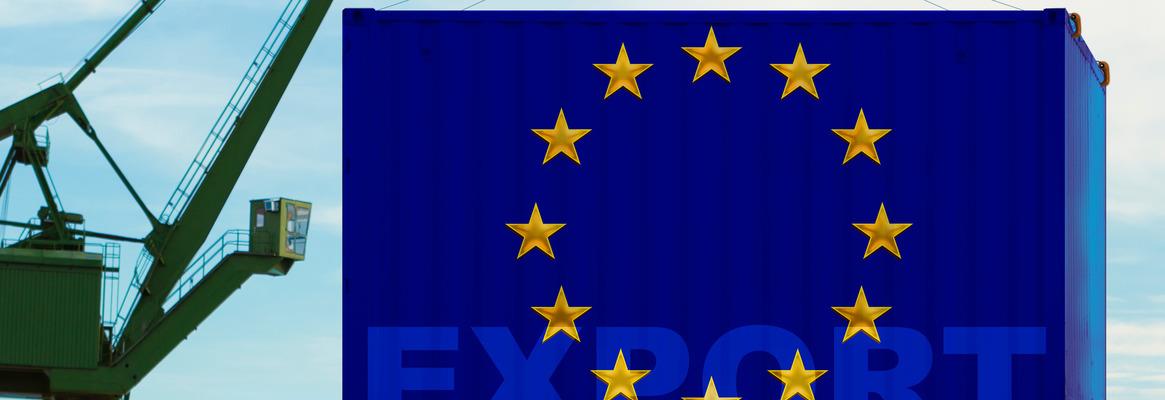Pakistan’s GSP status accorded by EU is set to come under review. If revoked, Pakistan’s textile trade with EU could have severe consequences. Textile exports make up almost 81 per cent of Pakistan’s exports to EU. While, competing economies like Turkey, Bangladesh and some EU nations could gain, India’s gains are expected to remain limited to cotton exports.
The EU parliament is yet to deliberate on the GSP status accorded to Pakistan. The GSP status provided to several of the low-income countries result in removal of duties on a large proportion of their exports to the EU, thereby rendering their exports relatively more competitive in the EU market. The GSP status evidently had a positive impact on Pakistan’s exports to the EU countries. However, this was mostly limited to textile related products and overall imports to EU from Pakistan have hardly had any dent due to the cost competitiveness that the scheme provided.
The GSP status helped Pakistan’s textile & garments industry to significantly boost exports to the EU. The likely termination of the incentives will lead to an immense trade loss to Pakistan as its producers will then have to look for alternative markets for their products. Losing imports from Pakistan might however not hurt EU as much. The fact that on an aggregate basis Pakistan has a meager 0.2 per cent share in EU imports makes it even less relevant and highly substitutable as a trade partner. EU has most imports coming from China and also within the region. The economies such as Bangladesh, India have increased their shares in the last 20 years, while Japan, Turkey and Russia also hold relevant shares. Pakistan managed to benefit the most among all the GSP countries from the duty relaxations and the benefit largely accrued to its textile and garments sector. However, for this industry as well, Pakistan isn’t a significant import partner for the EU. Just taking the broader categories in textile & garments, Pakistan constituted 4.1 per cent in yarn and fabric imports, 2.2 per cent in apparel & clothing accessories imports and 0.5 per cent in fibre imports to the EU (Source: UNCTAD Stat).
European Union is one of the largest markets in the world, and losing favourable access to it will be devastating for Pakistan’s textile sector. Pakistan textile and garments exports to EU were worth USD 7.7 billion in 2019, almost 2.8 per cent of its GDP and 81 per cent of its overall exports. The resulting shift in trade flows will benefit competing nations which already export heavily to the EU even without any preferential access. China has the largest share in all the broader categories of textile and garments imports to the EU and would have likely gained from the situation had it not been for the recent developments on the geo-political front. Western nations are increasingly looking to broaden their trade basket with other countries even when China remains a low-cost competitor. Recent two-way sanctions on officials in the EU and China have only led to more uncertainty about how the two trade partners will be dealing with each other going forward. This makes China an unlikely candidate for attracting much of the trade flow which may now shift out of Pakistan.
While on the one hand EU has suspended plans for any trade deal with China, it is now considering a trade deal with India. India has managed to increase its overall import share to the EU only slightly during the last 25 years from 0.5 per cent in 1995 to 1.0 per cent in 2019. Relative to other competing economies, India is not a significant importing nation to the EU, however in some of the textile and garment categories it holds a relatively higher share. Particularly in apparel & clothing imports to the EU, India holds a 3.6 per cent share as of 2019, while in yarn & fabric imports it has a matching share as that of Pakistan. In fibre imports as well, India only has a 2.9 per cent share. Deliberations on trade and bilateral investment agreement between EU and India have been stalled now for many years, and given India is expected to emerge as one of the fastest growing large economies post the pandemic, both sides will likely gain from the resulting increase in trade.
Pakistan and India are structurally very different economies and share different trade relations with the European Union. Pakistan’s total imports to the EU amounted to USD 9.5 billion in 2019, while that from India were more than USD 59.4 billion. The export basket of India to the EU is also relatively more diversified than Pakistan’s. The latter has almost 81 per cent of its exports to EU from the textile and garments sector, while the former has just 18 per cent coming from this sector. Even within the textile and garments space, Pakistan majorly exports raw materials or intermediates to the EU and finished products have a very low share. In EU’s cotton imports, Pakistan had a 4.7 per cent share in 2019. This share has been on a swift decline since 2010 from 10.2 per cent. On the other hand, India’s share has already been on a rise from 3.9 per cent in 2010 to 9.6 per cent in 2019. Although other countries such as Brazil and Turkey have seen massive increase in their shares as well, so far as cost of importing is concerned, India becomes a direct competitor to its neighbour.
With the GSP incentives not available to make Pakistan’s cotton more attractive, India’s share in cotton imports to the EU might see further increase. Amongst all textile related categories, Pakistan has the largest share in EU imports in cotton woven fabrics at 14.9 per cent in 2019, and this category consequently has a 7 per cent share in Pakistan’s overall textile and garments exports to the EU. Apart from Pakistan, EU’s imports of cotton woven fabrics are largely dominated by Germany, Italy, China and Turkey. India has a 2.7 per cent share in the category, implying the imports from Pakistan will most likely be taken up by the four major importing nations. Similarly, in MMF woven fabrics, both Pakistan and India have very low shares of 2.3 per cent and 1.7 per cent as of 2019, and apart from China, the lost imports from Pakistan will most likely be supplied by EU countries or Turkey, which cumulatively hold more than 51 per cent share.
In men’s woven clothing, Pakistan has a significantly larger share in EU’s imports than India (4.4 per cent vs 2.2 per cent in 2019), and incentives on these products could very well boost India’s exports to the EU in this category. Although, in men’s woven clothing, Bangladesh has emerged as the second largest import source for the EU, and is more likely to absorb the import loss. The Everything But Arms (EBA) status accorded to Bangladesh by the EU, under which a large part of Bangladesh’s exports enter EU duty-free might also come under review sooner. But even without these incentives, Bangladesh maintains cost competitiveness relative to India and will be better placed to take advantage in the men’s clothing category at least.
The two textile related categories which matter most for India when it comes to the EU are women’s woven fabrics and articles of apparel of textile fabrics, both of which combined had a 41.5 per cent share in India’s overall textile related exports to the EU (Source: UNCTAD Stat and TexPro). Within these sectors however, Pakistan has never been a significant competitor to India, with imports amounting to only half of what India sends to the EU.
EU being a large trading bloc, any significant trade deal with the region and trade disruptions with a particular nation, is expected to benefit several of its other trading partners. With respect to exports to the EU, India and Pakistan only compete very significantly and also have a large presence, in cotton fibres. So, any loss to Pakistan’s cotton imports to EU can directly benefit India cotton flows to the EU. The two neighbours either hardly compete in most of the remaining categories or are so small to have no visible impact. If the supposed trade deal between EU and India materialises, it is bound to render imports from India to the EU very cost competitive in many of the merchandise categories and not just textiles. However, with very less direct substitution with Pakistan’s textile imports, perhaps India’s gains will remain muted.











Comments